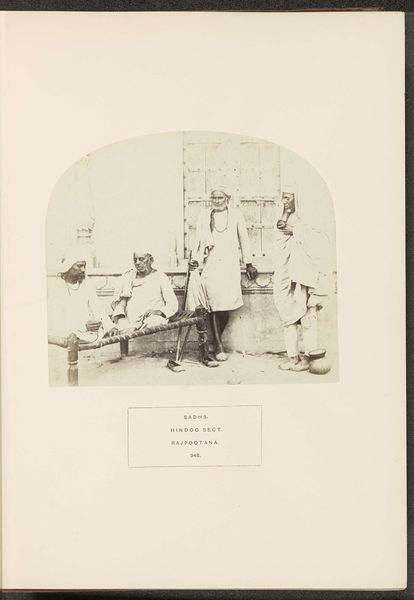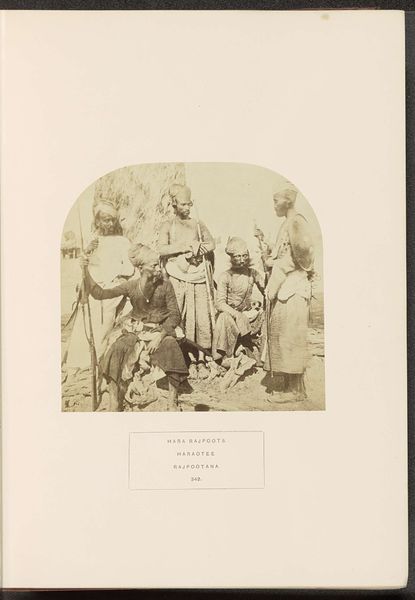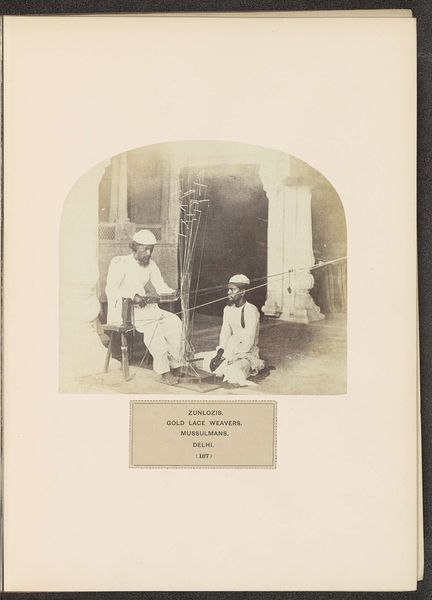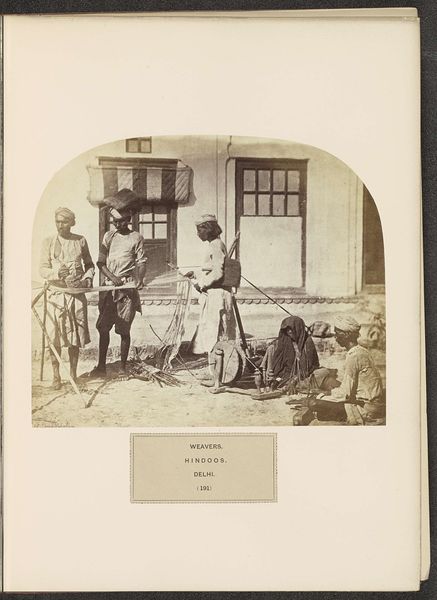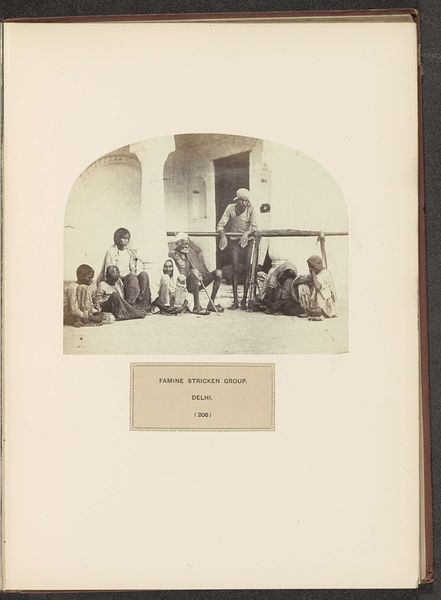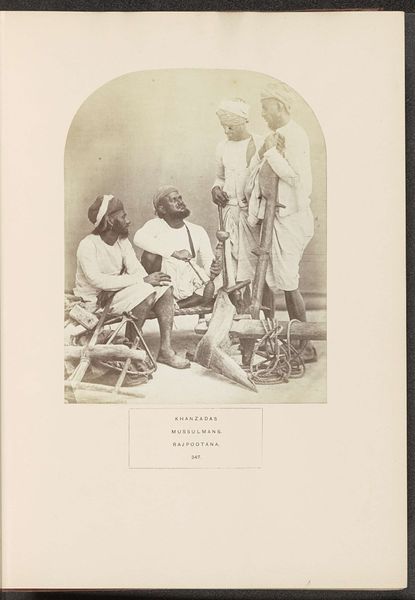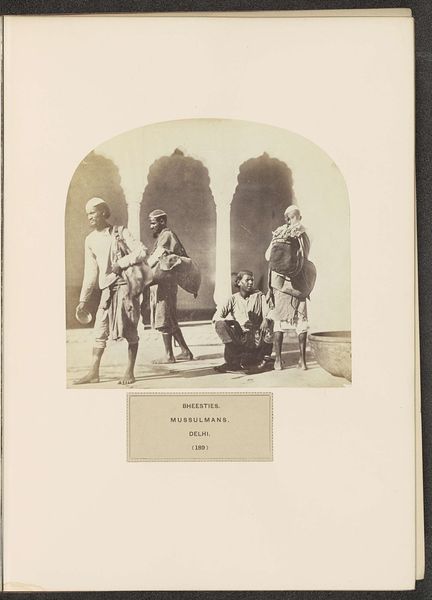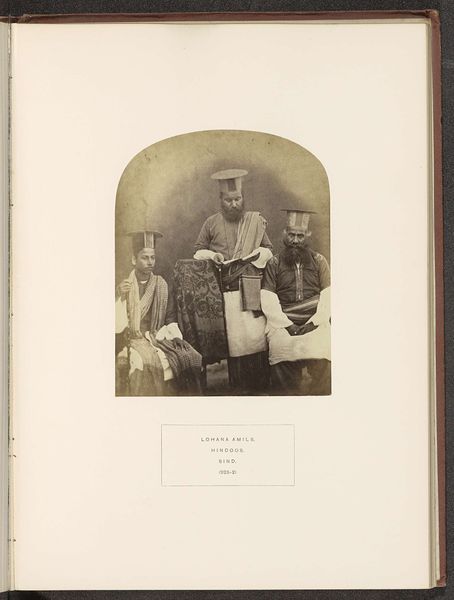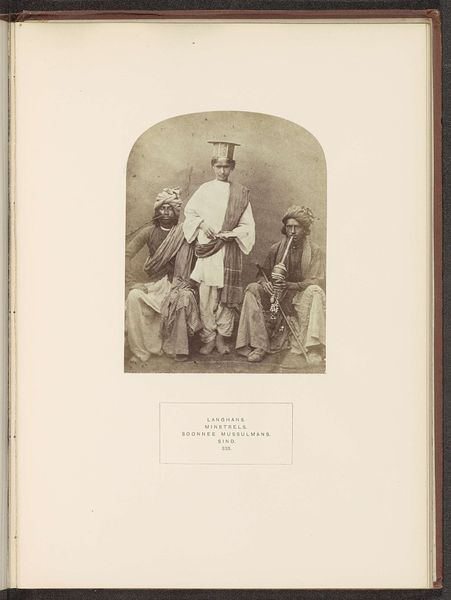
photography
#
portrait
#
asian-art
#
photography
Dimensions: height 145 mm, width 169 mm
Copyright: Rijks Museum: Open Domain
Curator: This photographic print is titled “Four Rajputs with weapons and a shield in Delhi.” It’s attributed to the studio of Shepherd & Robertson and dates to around 1869. The image shows four men in what is now present-day India. Editor: Wow, look at them. There's a quiet power here, a stoicism. Even captured in this sepia tone, you can feel the weight of their presence. That shield looks particularly formidable, doesn't it? The entire image evokes a narrative, almost as if they are waiting...or guarding something important. Curator: Indeed. The weaponry certainly plays a key role. We have spears, shields… objects representing both defense and assertion. Note how each figure holds themselves; it tells of cultural values placed upon honor and strength. Their turbans also communicate a distinct social identity. It's fascinating how posture and adornment encode so much. Editor: Exactly! And the fact that they chose to be captured like this, presented this way to the world. What does this representation mean? The photograph itself becomes an artifact, imbued with as much intent and history as any painting. It also speaks to the relatively early practice of photography documenting and defining cultures from around the world. There’s this real tension between “art” and raw visual data, you know? It's all very fascinating and complex when looking back. Curator: Yes, and in those details lie significant reflections. For instance, the shield, it’s not merely protection, but perhaps symbolic protection, bearing the marks of both status and potentially, past conflicts or affiliations. I keep wondering who these individuals were and what the experience of the sitting was like for them. These traces of culture help unlock an important portal through both space and time. Editor: Thinking about their faces too, there’s almost an expectation, like we should instinctively *know* something about them, when in reality we just observe, reflect, and wonder. You know, photographs, even historical ones, become little time machines where you can reach back, only to be reminded you can't truly touch that past. Curator: A very eloquent point. These enduring images provide access to an emotional landscape, reminding us of humanity’s common threads amidst diverse experiences and specific cultural expression. Editor: Right, leaving us with a lingering sense of wonder, which, let’s face it, is a pretty wonderful parting gift.
Comments
No comments
Be the first to comment and join the conversation on the ultimate creative platform.
